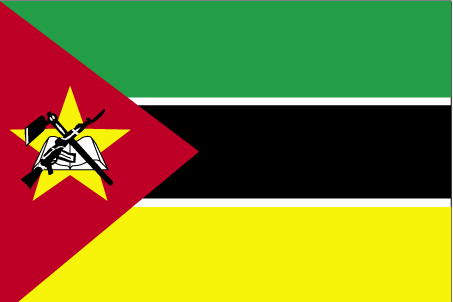To help inspire or plan your trip to Mozambique, some of its major attractions
for travellers are shown below, including some of the best natural, historical, cultural and adventure sites in the country.
These include all of UNESCO World Heritage Sites for Mozambique which represent the best
of the world's cultural and natural heritage.
Click on the icons below to focus on specific types of features
(click again to return to all).
|
|
|
|
|
|
|
|
|
|
|
|
 |
|---|---|---|---|---|---|---|---|---|---|---|---|
| Natural | History | Wildlife | Trekking | Cities | Religious Monument | Boat Journey | Rail Journey | Diving | Cultural | Adrenaline | UNESCO WHS |
| Maputo | |
|---|---|
Maputo is the capital city of Mozambique and is a vibrant and colourful city with a population of two million people. It is a city renowned for its impressive colonial architecture, chaotic markets, seafood restaurants and its nightlife. | |
| Mozambique Beaches | |
|---|---|
The beaches in southern Mozambique are renowned for their beauty and the warm, clear tropical waters of the Indian Ocean. They offer a welcome break and relaxation on many overland trips in southern Africa. The area is an excellent location for diving or snorkelling - underwater attractions include manta rays, whale sharks, turtles, the rare dugong and a huge variety of reef fish. Other options include surfing, kayaking, dhow boat trips or dolphin cruises. | |
| Island of Mozambique | |
|---|---|
The Portuguese settled in Mozambique during the 16th century as a base for their maritime trade routes to India. The island of Mozambique in the north of the country was developed from this time, with the buildings of the town demonstrating a fusion between Portuguese and local influences. The same building techniques, materials and decorative principles were used throughout, yielding a remarkable architectural unity to the island. Notable buildings include the St. Sebastian Fortress and other defensive and religious structures. UNESCO World Heritage Site: Island of Mozambique | |
| Parque National do Limpopo | |
|---|---|
Located on the border with South Africa, the Parque National do Limpopo combines with South Africa’s Kruger National Park and Zimbabwe’s Gonarezhou National Park to form the Great Limpopo Transfrontier Park, one of the world's largest conservation areas. The park is home to elephants, buffalo and giraffe as well as numerous species of wildlife. | |
| Inhambane | |
|---|---|
Inhambane is one of the oldest settlements in Mozambique, which has operated as a port since the 11th century, trading ivory, slaves, spices and gold. The town displays both Arab and Christian influences, with the cathedral in town being over 200 years old. Other notable buildings in the town include the governor's building, the marine building and the mosque. | |


